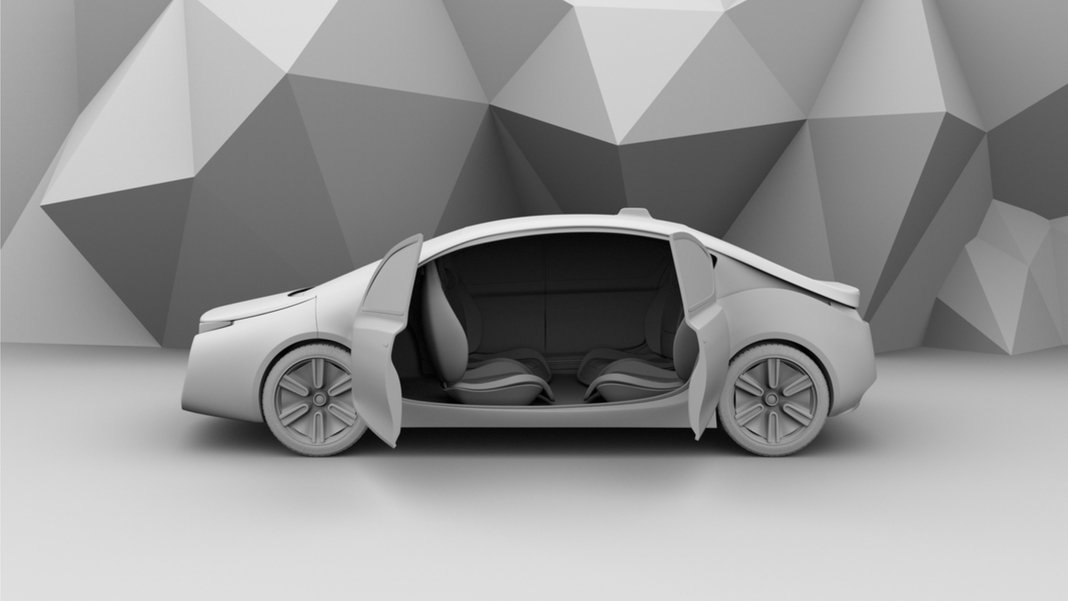Even as the capabilities of self-driving cars continue to evolve, it is not a given that consumers will choose to buy one. What is equally likely is that autonomous vehicles will transform the automotive industry entirely.

According to some estimates, there could be as many as 10 million cars with self-driving features on the road by 2020. In fact, surveys suggest there will be fewer car owners and more driverless vehicles in the future.
The assumption is that self-driving fleets will make car ownership much less attractive. Indeed, ridesharing leaders like Uber and Lyft are banking on it.
Last September, Uber deployed its first self-driving pilot program in Pittsburgh. Meanwhile, Lyft’s president and co-founder John Zimmer recently posted a manifesto predicting that the majority of rides within the Lyft network would be self-driving as early as 2021.
Autonomous vehicles will likely have the largest impact in cities. Close to 3.7 billion people now live in cities, with that number projected to rise to 6 billion or 70 percent of the world’s population by 2050.
Heated competition between on-demand companies like Uber and Lyft is now converging with both traditional car companies (GM, BMW, Audi, Mercedes Benz) and technology leaders (Google, Apple, Tesla). Tesla, for example, aims to have its driverless fleet ready by 2018. Automakers are already adapting as well. In February, Cadillac is introducing a subscription car service that allows drivers to enjoy a variety of vehicles on-demand. The service will cost $1,500 per month.
The challenges ahead
Nearly 1.3 million people die in traffic fatalities each year. The hope is that autonomous vehicle technology (AVT) will help to mitigate these unnecessary deaths by automating traffic management. The promise of self-driving cars suggests that some fusion between public transportation and private car use is on the horizon. Given the fact that 90 percent of auto accidents are the result of human error, it would seem likely that self-driving cars will disrupt the auto insurance industry as well.In truth, self-driving cars are not as radical as they may seem. Autonomous vehicles build on many related technological changes that have already impacted other industries. These include shifts in factories (machine automation), telecommunications (internet), and aircrafts (autopilot). Long before the arrival of self-driving cars, the elevator transformed how humans physically moved through buildings and cities, eventually eliminating the need for human operators altogether.
Nonetheless, some analysts believe it will be decades before self-driving cars are capable of fully navigating complex urban streets. It remains the case, for example, that autonomous vehicles struggle with local roads and intersections. Google’s self-driving cars can “see” moving objects in real time, but depend upon maps to recognize stationary objects like traffic lights.
Autonomous vehicles are largely safe. That is not in question. Google alone has tested its technology over 2 million miles with only 14 collisions—13 of which were the fault of other drivers. However, Google's autonomous vehicles have been heavily challenged by poor weather conditions and complicated city driving. More problematically, the recent fatal death of a Tesla owner in Florida suggests that autonomous vehicles still have some way to go.
Like any new technology, self-driving cars pose new risks as well as new opportunities. One obvious challenge is the technology itself. As the automobile industry absorbs more and more computational technologies, the cars are becoming prime targets for hacking.
Last year a Chinese security team successfully hacked a Tesla Model S, demonstrating several security vulnerabilities. Researchers were able to interfere with the car’s brakes, door locks and other electronic features. Fortunately, the team notified Tesla of the hacks, enabling the company to update and patch its software before it became a serious problem.
Regulating autonomous vehicles
Erecting effective policies and regulations for managing the mainstream adoption of self-driving cars remains a complicated challenge. The issue of liability, for example, is a thorny one. However, if autonomous vehicles can save lives, then they will also restructure the risks inherent in driving. This is the assumption of many large automakers as well. Volvo and Mercedes have already indicated that they will assume full liability for their autonomous vehicles.Autonomous vehicles may not entirely eliminate personal injury insurance, but they will likely drastically reduce the number of insurance claims.
In addition to saving lives, self-driving cars will mean significant cost savings: Traffic accidents cost $500 billion worldwide each year. As Warren Buffet recently commented, “If there are no accidents, there is no need for insurance.”
Self-driving cars are coming
Notwithstanding the fact that autonomous vehicles face some major hurdles, they are coming. Legislation supporting the testing of driverless cars in the United States has already passed across nine states. Legislation authorizing AVT testing began in Nevada in 2011.Since then, legislation has passed in Florida, California, Louisiana, Michigan, North Dakota, Tennessee, Utah, Virginia, and Washington DC In fact, in 2016, Florida eliminated both the requirement that vehicle operation be done for testing purposes and that a driver be present in the vehicle, altogether.
What we can probably safely predict is that the introduction of “self-driving” as a feature of automobiles will become as commonplace as cruise control.
To be sure, technology companies stand to make a tremendous amount of money from AVT. The autonomous car industry could be worth in excess of $2 trillion over the next two decades. Assuming that Lyft and Uber are the future, then personal car ownership could eventually become a thing of the past.

No comments:
Post a Comment